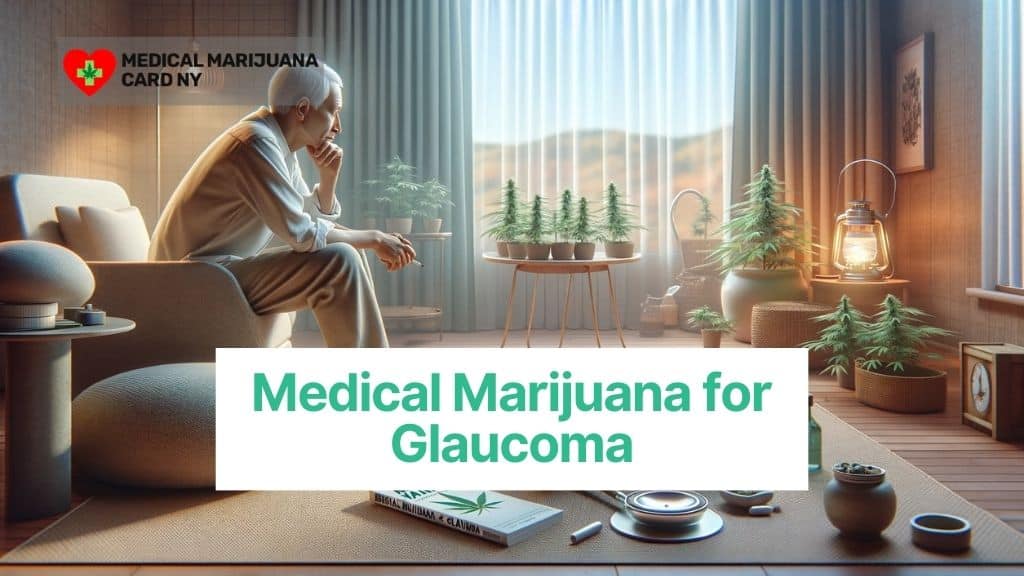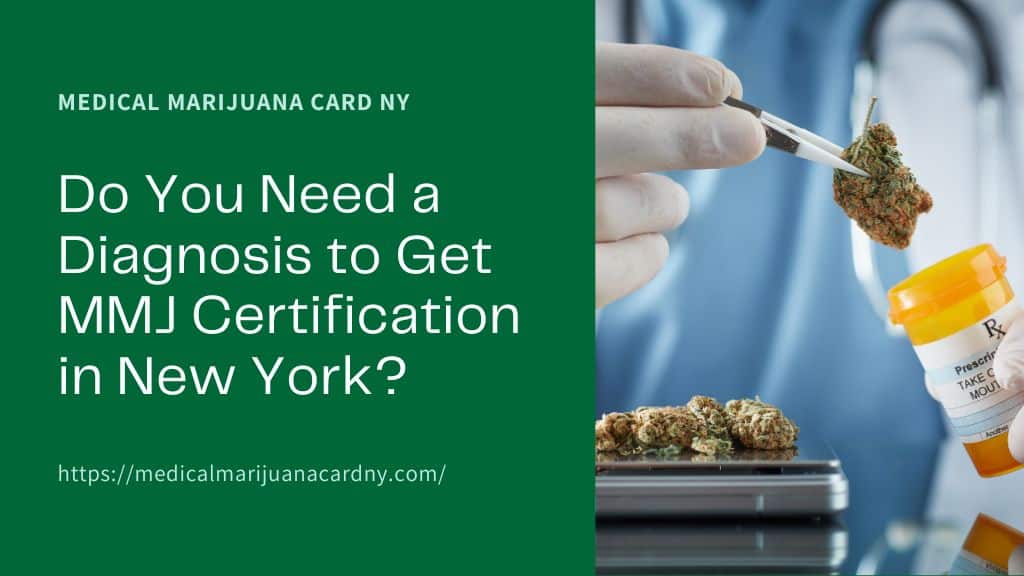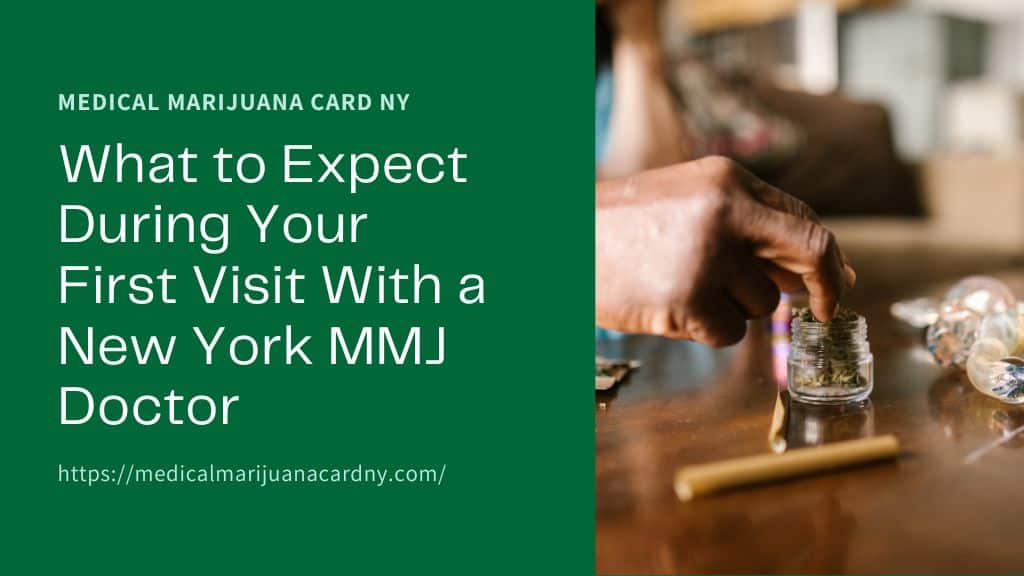The topic of Medical Marijuana for Glaucoma in New York presents a complex landscape, reflecting both its potential benefits and the challenges associated with its use. Glaucoma, characterized by increased intraocular pressure, can lead to vision loss if not effectively managed. Studies from as early as the 1970s have shown that medical marijuana can reduce this intraocular pressure by 25 to 30 percent, albeit temporarily for about 3 to 4 hours. Despite this, there’s a lack of long-term data on its safety and effectiveness, leading medical societies like the American Glaucoma Society and the American Academy of Ophthalmology to advise against its use for glaucoma treatment.
In New York, glaucoma is listed as a condition that qualifies for medical marijuana use. However, the practicality of using marijuana for glaucoma treatment is debatable due to the short duration of its effects, requiring frequent dosing and raising concerns about side effects and long-term impact. As societal norms evolve and interest in medical marijuana grows, more patients are inquiring about it as a potential treatment option, despite the mixed opinions in the medical community.
Given these considerations, patients in New York considering medical marijuana for glaucoma should consult with eye care professionals to discuss its role in their comprehensive treatment plan. It’s crucial to understand the legal status of marijuana in the area and to approach its use as a complementary treatment option rather than a replacement for existing therapies. This blog aims to provide a nuanced view of the use of medical marijuana for glaucoma in New York, considering both its potential benefits and the limitations and risks involved.
Table of Contents
ToggleIntroduction to Medical Marijuana and Glaucoma
What is Glaucoma and How is it Typically Treated?
Glaucoma is a group of eye conditions that damage the optic nerve, crucial for good vision. This damage is often linked to an increased pressure in the eye, known as intraocular pressure (IOP). If not managed properly, glaucoma can lead to blindness, particularly in individuals over 60 years old. The most common type of glaucoma is open-angle glaucoma, characterized by gradual pressure buildup due to inefficient drainage of eye fluid. Another type, angle-closure glaucoma, is less common but more sudden and severe, requiring immediate medical attention.
Treatment for glaucoma mainly focuses on lowering the IOP to prevent further damage to the optic nerve. Common treatments include prescription eye drops, which work by either decreasing fluid production in the eye or increasing fluid drainage. In some cases, oral medications are also prescribed. Advanced cases of glaucoma might require surgical interventions, such as laser therapy or more invasive surgical procedures to improve fluid drainage or create new drainage pathways.
What is Medical Marijuana?
Medical marijuana refers to the use of the Cannabis plant or its chemical extracts to treat diseases or medical conditions. It contains compounds like cannabinoids, with THC (tetrahydrocannabinol) and CBD (cannabidiol) being the most well-known. THC is known for its psychoactive effects, while CBD does not cause a “high” and is often used for its potential therapeutic benefits. Medical marijuana’s effectiveness varies depending on the condition being treated, and it’s often a subject of ongoing research and debate within the medical community.
Potential Benefits of Medical Marijuana for Glaucoma
How Can Medical Marijuana Help with Glaucoma?
Medical marijuana has been investigated for its potential benefits in treating glaucoma, primarily because of its ability to lower intraocular pressure (IOP). Research in the 1970s indicated that marijuana, when smoked, could reduce IOP in both normal individuals and those with glaucoma. This reduction in IOP is primarily attributed to THC, the active compound in marijuana.
The National Eye Institute supported studies from 1978 to explore whether marijuana or its derivatives could be effective for glaucoma treatment. These studies found that marijuana, whether smoked, taken orally, or administered intravenously, can transiently lower IOP. However, they also noted that the duration of this IOP reduction is short-lived, lasting about three to four hours.
What Does Research Say About Medical Marijuana and Glaucoma?
Despite early findings suggesting the potential of marijuana in reducing IOP, further research and the position of medical societies suggest caution. It’s established that glaucoma requires continuous treatment to manage IOP effectively, 24 hours a day. The short-lived effect of marijuana’s IOP-lowering capability makes it impractical for continuous treatment. Moreover, concerns have been raised about the potential side effects of marijuana, such as increased heart rate and decreased blood pressure, which could counteract the benefits of lowered IOP.
The American Glaucoma Society’s official position reflects these concerns, concluding that the side effects and short duration of action, coupled with the lack of evidence showing a change in the course of glaucoma, make marijuana a less desirable option for treatment at this time.
The interest in marijuana for glaucoma treatment was also dampened by the development of highly effective FDA-approved medications for glaucoma. While the evolving legal status of marijuana and documented benefits for certain other medical conditions have spurred calls for more research, the current consensus in the medical community is that glaucoma patients should follow conventional treatments as prescribed by their doctors.
Risks and Considerations
Risks of Using Medical Marijuana for Glaucoma
While the idea of using medical marijuana for glaucoma treatment has been explored, it comes with several risks and considerations. Studies have shown that smoking marijuana can lower intraocular pressure (IOP) in people with glaucoma, but this effect is temporary, lasting only about three to four hours. This short duration of action means that to effectively manage IOP, marijuana would need to be used multiple times throughout the day, which is impractical for most patients.
Moreover, there are potential side effects associated with the use of marijuana for glaucoma. These include:
- An increased heart rate and a decrease in blood pressure, particularly noted in studies using smoked marijuana. This decrease in blood pressure could potentially reduce blood flow to the optic nerve, negating the benefit of lowered eye pressure.
- Visual side effects like reduced contrast sensitivity, impaired depth perception, increased sensitivity to glare, and dry eyes. These effects are temporary and subside as marijuana leaves the system.
- Psychological and cognitive effects, including the risk of hallucinations and impaired judgment, especially concerning for older individuals who make up a significant portion of the glaucoma patient population.
Comparison with Traditional Glaucoma Treatments
Traditional glaucoma treatments, including FDA-approved drugs, laser therapy, and surgery, have been proven effective in managing IOP and slowing the progression of the disease. These treatments offer more sustained control of IOP compared to the temporary effects of marijuana. Furthermore, they do not carry the same risks of side effects as marijuana, making them more suitable for continuous use.
The American Academy of Ophthalmology and the National Eye Institute do not recommend marijuana or its derivatives (including CBD) for the treatment of glaucoma at this time. They emphasize that the side effects, coupled with the lack of evidence supporting marijuana’s effectiveness over current treatments, make it a less desirable option.
Given these considerations, patients with glaucoma are advised to follow the treatments prescribed by their healthcare providers and discuss any interest in alternative therapies with them.
Medical Marijuana Laws in New York
Legal Guidelines for Medical Marijuana in New York
In New York, the use of medical marijuana underwent significant changes as of March 2023. The state no longer specifies particular medical conditions as qualifiers for medical marijuana use. Instead, it allows registered healthcare providers to certify patients for medical cannabis if they deem that the patient’s condition could benefit from its use. This decision is left to the discretion of the healthcare providers, making the process more flexible and patient-centric.
As for the legal framework, adult-use marijuana has been legal in New York since the passing of the Marijuana Regulation and Taxation Act (MRTA) in 2021. This law permits adults aged 21 and over to use, possess, and purchase cannabis. The state has also established regulations for the sale and distribution of both medical and recreational marijuana.
Obtaining Medical Marijuana for Glaucoma in New York
To legally obtain medical marijuana for glaucoma or any other condition deemed suitable by a healthcare provider, patients must follow these steps:
- Consultation with a Healthcare Provider: Patients need to consult with a healthcare provider registered with the New York State Office of Cannabis Management. This can be done in person or through telemedicine services. The provider will assess the patient’s condition and determine if medical marijuana is a suitable treatment.
- Receiving Medical Cannabis Certification: If deemed appropriate for treatment, the healthcare provider will issue a medical cannabis certification to the patient. This certification now includes a registry ID number, eliminating the need for a separate medical marijuana card.
- Purchasing Medical Cannabis: With the certification and a valid government-issued ID, patients can purchase medical cannabis from registered dispensaries in New York. The certification and ID are all that is required to make a purchase.
- Home Cultivation: Registered medical marijuana patients aged 21 or older may grow marijuana at home for medical use, subject to specific regulations and limits on the number of plants.
It’s important to note that while New York state has legalized medical marijuana, it is still illegal under federal law. Additionally, prices for medical cannabis vary among registered organizations, and these organizations may offer discount programs for patients who need financial assistance.
Patient Experiences and Perspectives
Who Has Benefited from Medical Marijuana for Glaucoma in New York?
In New York, patients with glaucoma have been exploring medical marijuana as a complementary treatment option, particularly to alleviate symptoms and manage intraocular pressure (IOP). Studies dating back to 1970 have shown that medicinal marijuana assists in coping with glaucoma symptoms, primarily by lowering IOP temporarily. The use of medical marijuana for glaucoma treatment, especially in areas like New York where it is legally accessible, has been motivated by these findings.
The characteristics of glaucoma, a group of eye diseases causing increased IOP and potential vision loss, have led patients to seek alternative treatments like medical marijuana. Notably, a 1971 study by Hepler and Frank indicated that marijuana could reduce IOP by 25 to 30 percent for about 3 to 4 hours. Another synthetic cannabinoid, HU-211, has been found to reduce IOP for over 6 hours. However, it’s crucial to remember that these treatments are supplementary and should not replace prescribed treatments or medications.
Why Do Some Patients Opt for Medical Marijuana for Glaucoma?
Patients opt for medical marijuana for glaucoma for various reasons. The primary motivator is its potential to temporarily lower eye pressure, which is a key factor in managing glaucoma. THC, a component of marijuana, has been shown to lower eye pressure, though its effects are temporary and last only a few hours.
However, there are important considerations and limitations. The temporary nature of marijuana’s IOP-lowering effect necessitates frequent dosing, which can be impractical and lead to potential side effects such as dry eyes, redness, and impaired cognitive functions. Furthermore, marijuana’s side effects can be particularly challenging for older individuals, who form a significant portion of the glaucoma patient population. It’s also important to note that CBD, another component of cannabis, does not lower eye pressure and may even increase it.
Owing to these factors, vision care providers often do not recommend marijuana as an alternative treatment for glaucoma. Additionally, the long-term effects of cannabis use for glaucoma treatment are still unknown, and its use has not yet been officially endorsed by ophthalmological societies such as the American Glaucoma Society or the American Academy of Ophthalmology.
Patients are encouraged to consult with their eye care professionals before considering medical marijuana as part of their treatment plan. This consultation should include a discussion of the comprehensive treatment plan, legal implications, and an individualized approach to determine the most suitable strain and dosage.
Conclusion
Medical marijuana for glaucoma offers a temporary reduction in intraocular pressure, which can be beneficial for symptom management. However, its effectiveness is limited by the short duration of action and the need for frequent dosing. Additionally, potential side effects and the impracticality of continuous use, especially for older patients who are the most affected by glaucoma, make it a less favorable option.
While promising, medical marijuana should not replace conventional treatments and should be used only under professional guidance. Further research is necessary to fully understand its long-term effects and efficacy in glaucoma treatment.
Resources
https://www.nei.nih.gov/about/news-and-events/news/glaucoma-and-marijuana-use
https://www.aao.org/eye-health/tips-prevention/medical-marijuana-glaucoma-treament
https://www.ncbi.nlm.nih.gov/books/NBK224386/
https://glaucoma.org/should-you-be-smoking-marijuana-to-treat-your-glaucoma/
https://www.ncbi.nlm.nih.gov/pmc/articles/PMC4553646/
https://jamanetwork.com/journals/jamaophthalmology/article-abstract/2478542





